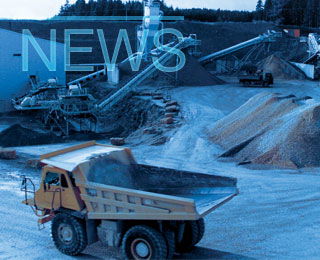Moroccan cement producers are spending nearly US$1.0bn by 2008 to increase output and productivity to meet higher demand and fend off competition from cheaper imports, analysts said on Tuesday. The industry, which has annual turnover of US$800m, expects demand to keep up the growth of the past four years. This has been fuelled by the state’s drive to tackle major shortfalls in housing and infrastructure and by the needs of a multibillion-dollar development plan for tourism, they said.
"Cement firms now run at 80-85 percent of their capacity. But they need to invest to cope with an expected annual rise of five per cent in demand over the next 10 years," said Meriem Bellahbib, head of reasearch at Attijariwafa brokerage house. Industry operators in the country are controlled by global majors Lafarge of France, Italcementi, Holcim and Portugal’s Cimpor.
"They now have an unprecedented visibility with development plans for housing, highways and tourism promising at least 150 billion dirhams ($17.4 billion) in investment by 2015," a senior official of cement industry group APC said. The investment figure includes 75 billion dirhams to eradicate shanty towns, about 50 billion dirhams to develop five seaside resorts and 25 billion for new highway links, he said.
"Cement firms will invest 8.0 billion dirhams by 2008 not only to boost output but also to resist competition resulting from free trade deals being impelemented this year with Turkey, Egypt and Jordan," he told Reuters. Cement produced by these countries can sell for half the price of the local product because Morocco’s energy costs are among the highest in the Mediterranean basin. "Energy costs represent a key challenge for cement makers since they make up two-thirds of production costs," said Maher Ben Ammar, analyst at Upline Securities brokers.
Lafarge plans to invest 3.5 billion dirhams over 2005-2008 to boost output and its 41.5 percent market share. Holcim has already begun building a $290m plant near the Casablanca area, seen as a fiefdom of Lafarge, to hike its 22 per cent market share generated mainly in Morocco’s northeast.
Italcementi’s Cimar, which holds a 28 per cent share with dominance over the south, is investing 1.5 billion dirhams to double by 2008 the capacity of its plant in Agadir and boost output of its other plants.
These firms have also deployed storage outlets near major ports like Tangier, Casablanca and Jorf Lasfar, but not for exports, said Younes Benmakhlouf, financial analyst at the Moroccan brokerage subsidiary of BNP-Paribas. "This will enable them to react quickly to shipments of imports by readjusting their prices," Benmakhlouf said.
